Types of Errors Poster
This blog post contains Amazon affiliate links. As an Amazon Associate, I earn a small commission from qualifying purchases.
Today I’m sharing a Types of Errors Poster I created.
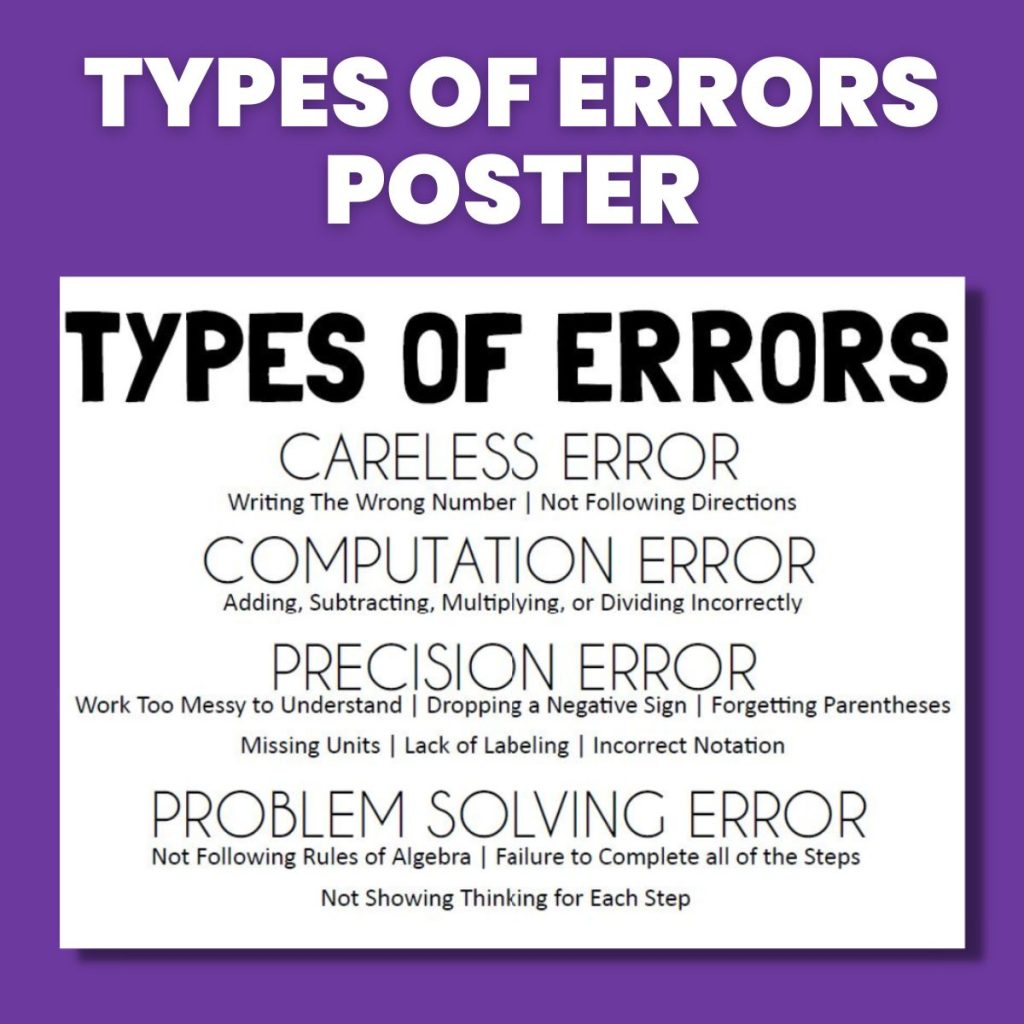
This year I’m making lots of tiny changes to my classroom.
Still doing notebooks. But, I’m letting students use their notebooks on their quizzes. And, our notebooks are going to have a heap more worked examples in them.
Still doing SBG. But, I’m changing the format of my quizzes and what students have to do to be able to requiz.
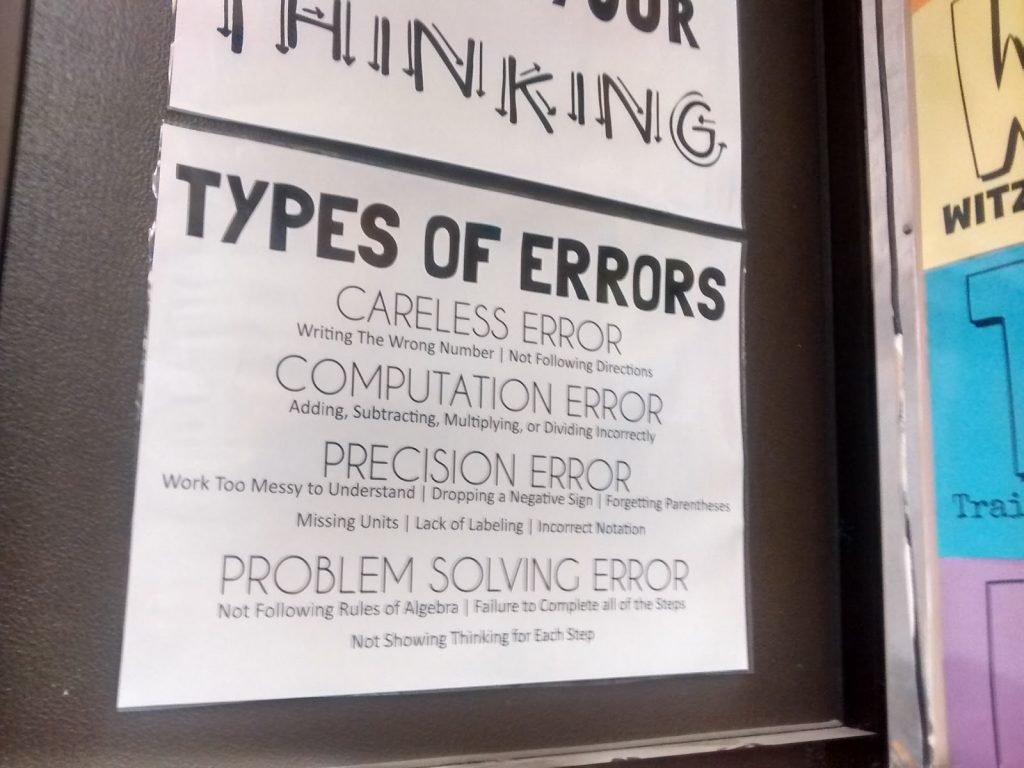
Still doing A/B/Not Yet. But, I’m toying with the idea of changing how I enter these grades in the computer. This is yet to be decided.
There’s a ton more examples, but I think you should have an idea of what I mean. 🙂
Last year, I required my students to retake any quizzes they received a “Not Yet” on. Students would get back their “Not Yet” quizzes and the groans and complaints would start. Life was unfair, they claimed. I hated them.
As the year progressed, the process of retaking quizzes slowly morphed into a system that kinda worked. At the beginning of the year, I would have students take the exact same quiz over. Some students quickly figured out that they just had to find a way to get their hands on someone’s quiz who made an A or a B and memorize the answers. This idea quickly went out the window. I started writing each kid a customized retake based on what they had missed on a separate sheet of paper. This worked better.
Each kid has their own personalized problems to work. Cheating was a whole lot harder all of a sudden. But, this also had its downsides. Personalized problems means Ms. Hagan has to work out the problem herself to check the work. Grading without an answer key is fine and dandy for some topics that I can do in my head without really thinking. But, dividing polynomials which result in a remainder? Those quizzes were a pain to grade!
For this next year, I am going to have all students take the same first SBG quiz for each skill. Then, students will be given one of four or five retake quizzes. Students will have to copy these retake quizzes in their own handwriting on a quiz template which should save me some hassle. I plan on writing these retake quizzes on index cards and keeping them in a box on my desk. Writing the retake quizzes and their answer keys will take a bit of time and effort, but I think it will be a much better system than this previous year.
Here’s the big difference though. I’m not going to let students get away with just retaking a quiz. This is probably what drove me the most crazy last year. It annoyed me even more than the students who were intentionally looking for ways to cheat in my class. It was the students who would show up at my desk and ask to retake a quiz. They would have their old “Not Yet” quiz in their hand to show me what quiz they needed.
I would take a look at the quiz, and I would ask, “So, did you figure out what you did wrong on that quiz?” Their answer would most usually be “No.” Then, I would ask, “How do you plan on avoiding making the same mistakes on the new quiz if you haven’t even figured out what mistakes you made on the first quiz?” And, I would send them back to their seats to spend some quality time with their old quiz.
It’s like my students thought that the act of retaking a quiz would magically improve their understanding of the concept. Instead of complaining about this any more, I’ve decided to take action. No quiz retakes without completing an error analysis sheet for the quiz. Now, this sheet has yet to be created because I haven’t exactly decided all that I want it to accomplish.
I do want this sheet to do these things:
- Require students to work out each problem correctly
- Ask students to identify what they did wrong when they first attempted the problem
- Direct students to reflect on how they will avoid making this same error in the future
- Get students thinking about what types of errors they are making.
When I hand back quizzes in my class, students immediately check to see if they made an A, a B, or a Not Yet. This leads to the A students rejoicing over their great fortune. The B students can be broken into two groups. There are the students who are relieved that they never have to take that quiz again. And, there are the students who are super frustrated with themselves for performing less than perfectly. The Not Yet students are usually either not surprised because they knew they had no idea what they were doing OR they are devastated because they thought they had aced the quiz.
When I mark quizzes as A, B, or Not Yet, that is the only piece of information I give the students. I don’t mark what problems they got wrong. I don’t circle their errors. I just write the letter(s) A, B, or NY. I want students looking at their quizzes and trying to figure out where they went wrong. This leads to students comparing their quizzes. This leads to discussion between students. How did you get that? Why was your answer right and my answer wrong? I love this. I love, love, love this.
Though, as students start to compare their quiz scores, the question always arises, “Why did I get a Not Yet and so-and-so get a B?” I explain that not all mistakes are equal. I only give students an A or a B on their quiz if they have convinced me that they have a solid understanding of how to solve the problem. If I have any doubts about their level of understanding, I am going to give them a “Not Yet.” It’s not because I hate them. It’s because I love them. I care about their future, and I want them to leave my class with the best understanding of algebra that is possible.
Then, I saw this an image on pinterest. It was designed for an elementary school classroom, but it got my brain to do some major thinking. Would making my students determine what type of error they had made make them thinking about their errors differently? I think it will. So, I set out to take this and modify it for my own high school classroom. I want to make a poster to hang on the wall. Then, I want to have an area on their error analysis sheet to have them note which type of error they made.
I came up with this, and I posted it to Twitter for feedback from the #MTBoS.

Have you noticed that I keep using the word “error”, but my poster says “mistake?”
One of my tweeps suggested that there is a difference between a mistake and an error. I have to admit that I’d never really thought about that before.
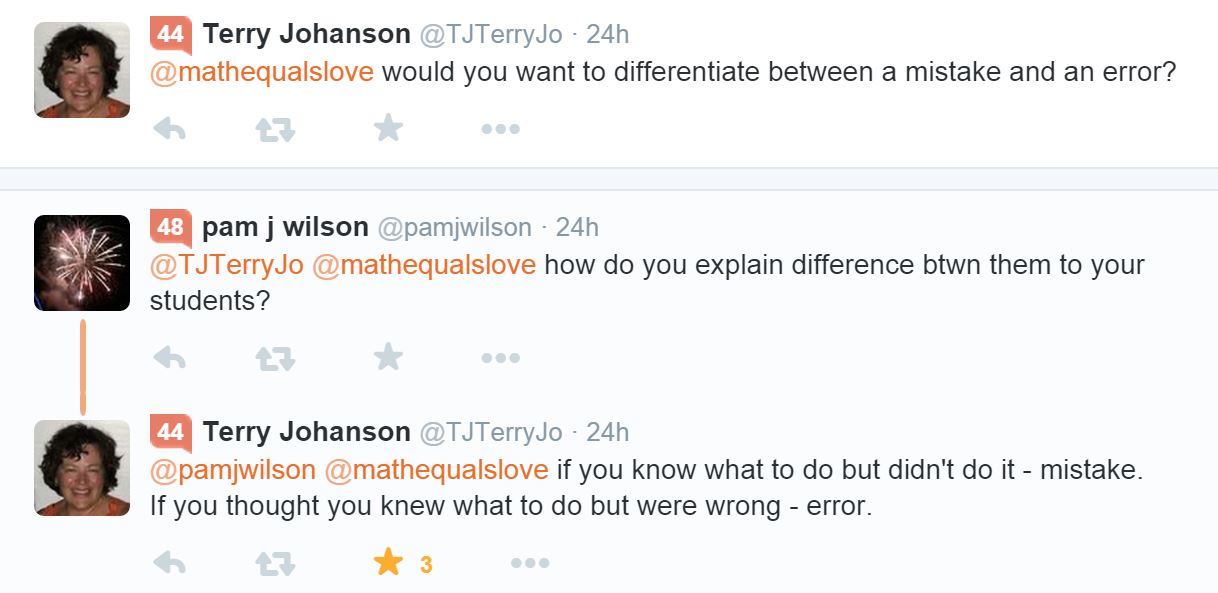
Another twitter conversation gave me even more food for thought.
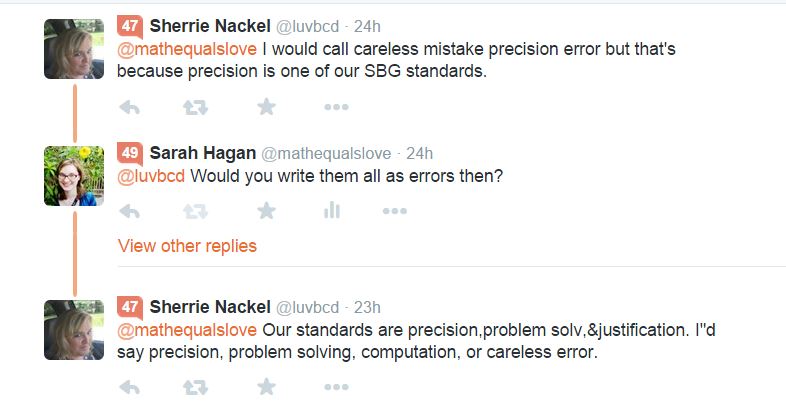
These two conversations led to this new version of the poster:

Is it perfect yet? I don’t think so. I’m still thinking about how errors should be classified. I’m still debating which category some of these examples belong under. There are still a ton of ideas percolating in my brain.
One person on twitter suggested changing “careless error” to “attention error.” I’m still thinking about this. Another tweep suggested that careless errors and computation errors could be combined at the high school level. I think this would work for my Algebra 2 students, but for my Algebra 1 students who still struggle with integer operations, I think I need to leave them as separate categories for right now.
But, I want to go ahead and post this types of errors poster for a few reasons.
- You guys are amazing. You can help me make this better.
- School is getting ready to start back for many of us. If I’m going to post a poster, I should do it sooner rather than later.
- I’m hoping someone else might be interested in joining me on this journey of having students classify their errors throughout the school year. Any takers?
I’m thinking that I want to start class one day per week with analyzing an incorrectly worked problem. Students will have to find the error, classify the error, and correct the error.
Types of Errors Poster Files
Click here to SAVE the file to your device.
Types of Errors Poster (PDF)
3522 saves – 116.30 KB
If you wish to edit the file, you will need to make sure you install these fonts: Londrina Solid and Caviar Dreams.
These posters are currently formatted to print on 18″ X 24″ paper. You can print this size of black and white poster at Staples for $1.99! Then, all you have to do is laminate it to have a pretty giant poster to hang on your wall for just a couple of dollars. You can upload the file online, pay with your credit or debit card, and then just walk in the store and pick it up. I did this last year with my “What Zone are you in?” Poster and loved the results.
Want even more posters? Check out my posters page!


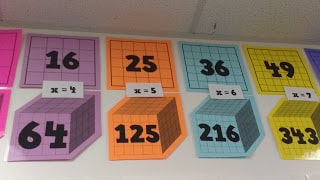
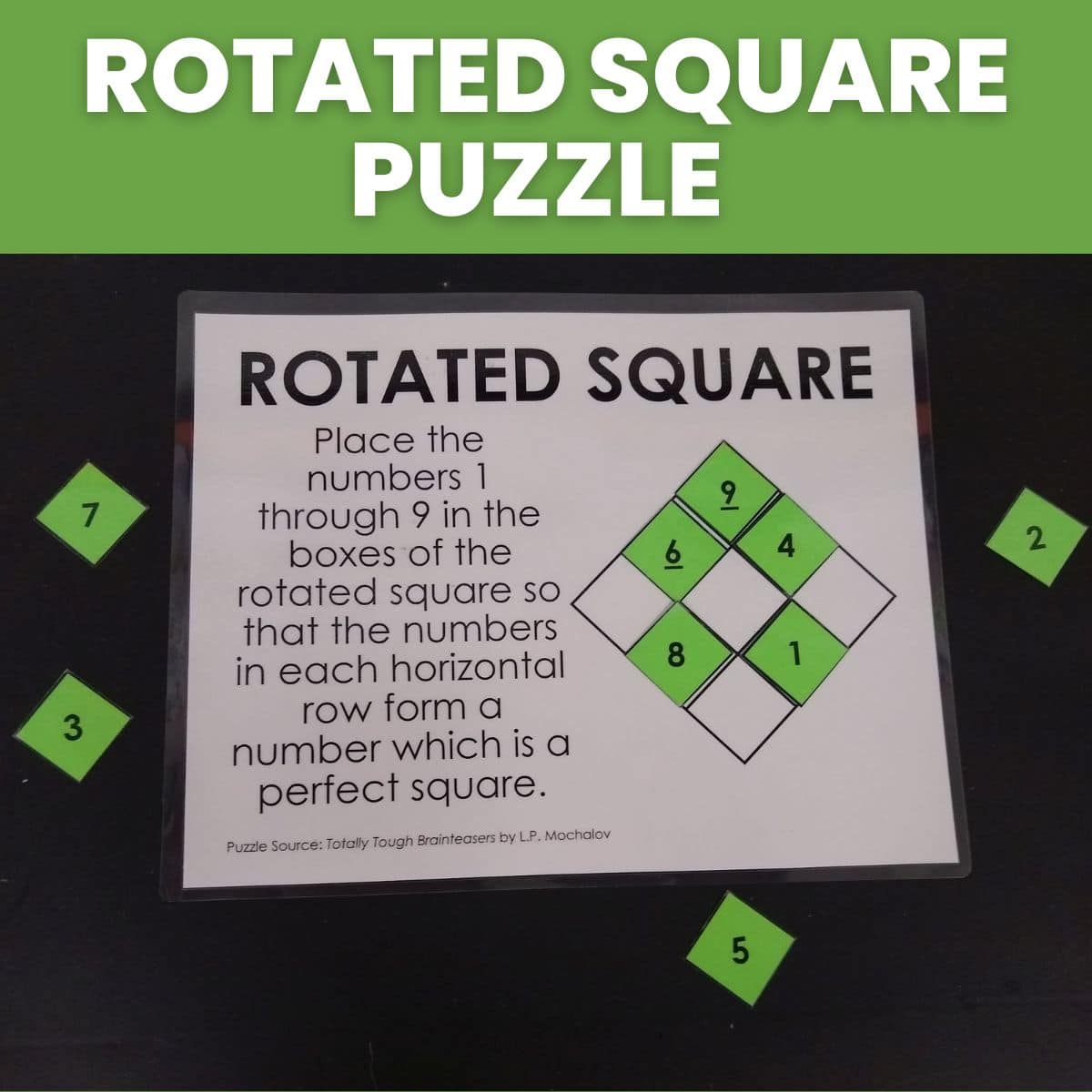
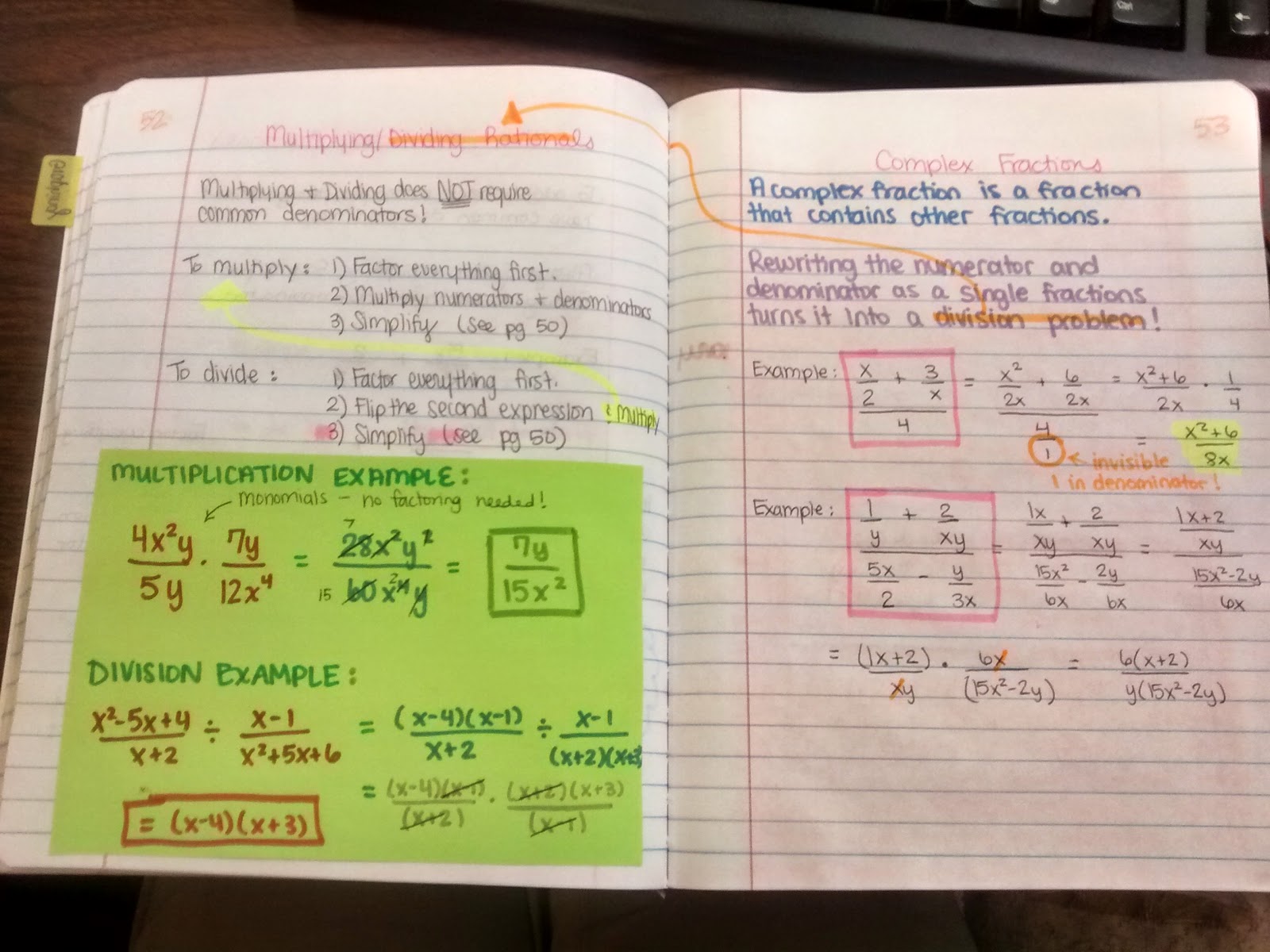

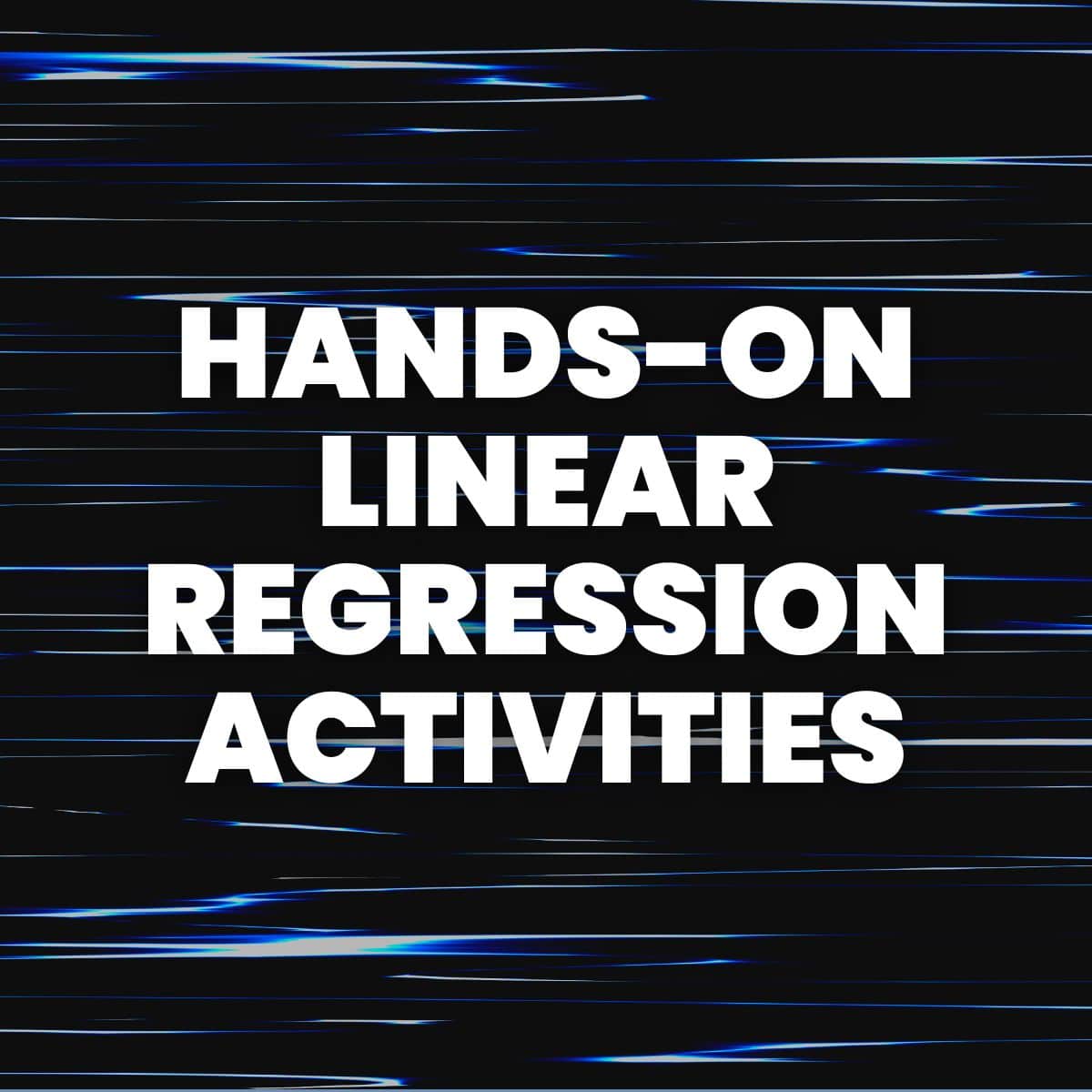
I really like the changes you made resulting in the second poster. I'll take one! Thanks, ~ Bridgette
Glad you like it!
Check out "Algebra by Example". It has great error analysis, but also helps the student by showing them where the error was. You could start the students off with these, then move to examples where they have to find the error themselves.
Thanks for the recommendation!
Loud round of applause for you to be thinking about changes you want to make in your classroom that will help your students to truly understand the concepts of the mathematics that you are teaching. I appreciate you sharing these ideas on your blog. http://whatssogoodaboutpubliceducation.blogspot.com/
Thank you, Peter!
I totally want to do this in my 6th grade class!!!
You should definitely try it!
This comment has been removed by the author.
Love how deeply you are thinking about what matters: kids taking responsibility to learn math. No strong opinion on error vs. mistake, though maybe error is less stingy than mistake? Thanks for sharing, Amy
I added one idea to Problem Solving Error: finding a solution, but not answering the question.
I gave students a template that had the problems broken down into categories. They had to circle which numbers they missed. That let them see if they missed a bunch of problems in the same category (OoO, solving equations, whatever). Then they had to explain the error(s) they made ("careless error" was not allowed, they had to be specific) and rework each problem. All this was required for either every student or every student who scored below 90% depending on which year it was and how much work I felt up to that year. There was a lot of copying – I never figured out how to get around that. But the kids who wanted to get something out of it learned a lot, and they said the cover sheets really helped them when it came time to study for finals.
Great idea!
I've always talked about this with students, and when they bring their corrected quizzes to me, they have to be able to explain what kind of mistake they made, but I LOVE LOVE LOVE the idea of having a poster printed that reminds them of these kinds of errors. THANKS!
Just wanted to say THANK YOU!!! Your page is AMAZING and a great help in setting up the Math classroom.
You said you want to start a class each week by analyzing an incorrectly worked problem, you should check out "my favorite no" method for this. It acts as a quick warm-up activity where the teacher quickly scans through student work and finds her favorite wrong answer and then analyzes it with the whole class. This wrong answer will be one that showcases a common misconception or mistake. Here is a link showing it in action. https://learn.teachingchannel.com/video/class-warm-up-routine
I hope you can find this helpful!
I've used this idea before and love it!
Hi! I love this idea. I definitely plan on using it (and SBG, if my principal approves) this year. So, if you're still looking for some one to do it too, here I am :-). I don't currently blog but am strongly considering it.
Awesome! And, you should definitely blog! I'll read it! 😀
One of my all-time favorite posts on your blog, Sarah! I don't know how I missed this originally! I love the thoughtful analysis you share, and I also love the ideas. Thank you! Sorry I keep yelling! 🙂
Thanks Jennifer! I'm a fan of exclamation points, too! 😀
I would be cautious about using the word "careless." Many students do care about their math. I use the word "silly" instead. Just a thought. Thanks! This is AWESOME!!
Good point!